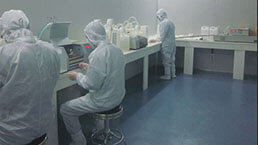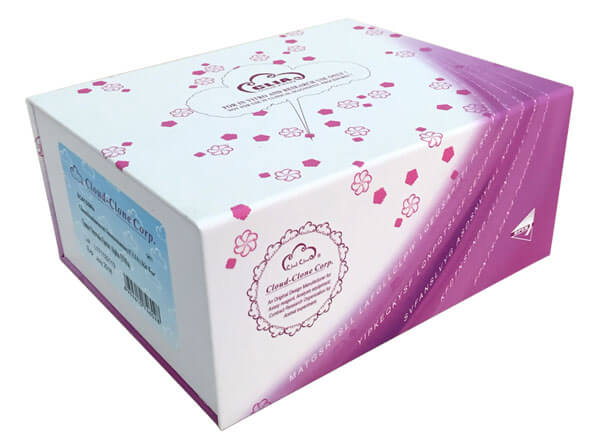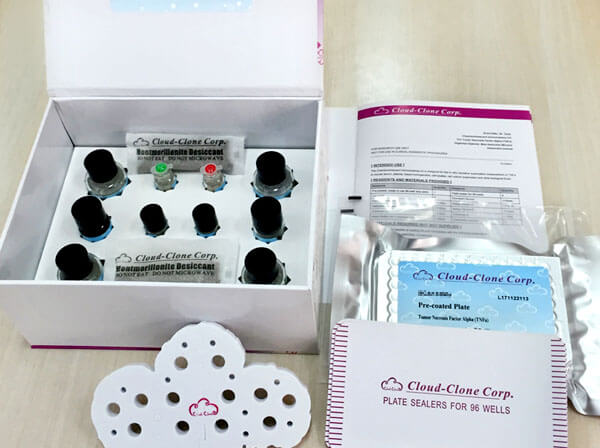CLIA Kit for Transforming Growth Factor Beta 3 (TGFb3) 

TGF-B3; LAP; Latency-associated peptide
- UOM
- FOB US$ 605.00 US$ 864.00 US$ 3,888.00 US$ 7,344.00 US$ 60,480.00
- Quantity
Overview
Properties
- Product No.SCB949Mu
- Organism SpeciesMus musculus (Mouse) Same name, Different species.
- ApplicationsChemiluminescent immunoassay for Antigen Detection.
Research use only - DownloadInstruction Manual
- CategoryCytokineTumor immunityInfection immunity
Sign into your account
Share a new citation as an author
Upload your experimental result
Review

Contact us
Please fill in the blank.
Recovery
Matrices listed below were spiked with certain level of recombinant Transforming Growth Factor Beta 3 (TGFb3) and the recovery rates were calculated by comparing the measured value to the expected amount of Transforming Growth Factor Beta 3 (TGFb3) in samples.
| Matrix | Recovery range (%) | Average(%) |
| serum(n=5) | 96-103 | 99 |
| EDTA plasma(n=5) | 78-97 | 82 |
| heparin plasma(n=5) | 86-94 | 90 |
Precision
Intra-assay Precision (Precision within an assay): 3 samples with low, middle and high level Transforming Growth Factor Beta 3 (TGFb3) were tested 20 times on one plate, respectively.
Inter-assay Precision (Precision between assays): 3 samples with low, middle and high level Transforming Growth Factor Beta 3 (TGFb3) were tested on 3 different plates, 8 replicates in each plate.
CV(%) = SD/meanX100
Intra-Assay: CV<10%
Inter-Assay: CV<12%
Linearity
The linearity of the kit was assayed by testing samples spiked with appropriate concentration of Transforming Growth Factor Beta 3 (TGFb3) and their serial dilutions. The results were demonstrated by the percentage of calculated concentration to the expected.
| Sample | 1:2 | 1:4 | 1:8 | 1:16 |
| serum(n=5) | 97-105% | 81-92% | 78-88% | 96-104% |
| EDTA plasma(n=5) | 84-101% | 81-98% | 92-101% | 78-97% |
| heparin plasma(n=5) | 79-89% | 88-95% | 85-101% | 96-105% |
Stability
The stability of kit is determined by the loss rate of activity. The loss rate of this kit is less than 5% within the expiration date under appropriate storage condition.
To minimize extra influence on the performance, operation procedures and lab conditions, especially room temperature, air humidity, incubator temperature should be strictly controlled. It is also strongly suggested that the whole assay is performed by the same operator from the beginning to the end.
Reagents and materials provided
| Reagents | Quantity | Reagents | Quantity |
| Pre-coated, ready to use 96-well strip plate | 1 | Plate sealer for 96 wells | 4 |
| Standard | 2 | Standard Diluent | 1×20mL |
| Detection Reagent A | 1×120µL | Assay Diluent A | 1×12mL |
| Detection Reagent B | 1×120µL | Assay Diluent B | 1×12mL |
| Substrate A | 1×10mL | Substrate B | 1×2mL |
| Wash Buffer (30 × concentrate) | 1×20mL | Instruction manual | 1 |
Assay procedure summary
1. Prepare all reagents, samples and standards;
2. Add 100µL standard or sample to each well. Incubate 1 hours at 37°C;
3. Aspirate and add 100µL prepared Detection Reagent A. Incubate 1 hour at 37°C;
4. Aspirate and wash 3 times;
5. Add 100µL prepared Detection Reagent B. Incubate 30 minutes at 37°C;
6. Aspirate and wash 5 times;
7. Add 100µL Substrate Solution. Incubate 10 minutes at 37°C;
8. Read RLU value immediately.

Test principle
The microplate provided in this kit has been pre-coated with an antibody specific to Transforming Growth Factor Beta 3 (TGFb3). Standards or samples are then added to the appropriate microplate wells with a biotin-conjugated antibody specific to Transforming Growth Factor Beta 3 (TGFb3). Next, Avidin conjugated to Horseradish Peroxidase (HRP) is added to each microplate well and incubated. Then the mixture of substrate A and B is added to generate glow light emission kinetics. Upon plate development, the intensity of the emitted light is proportional to the Transforming Growth Factor Beta 3 (TGFb3) level in the sample or standard.;
Giveaways
Increment services
-
 Single-component Reagents of Assay Kit
Single-component Reagents of Assay Kit
-
 Lysis Buffer Specific for ELISA / CLIA
Lysis Buffer Specific for ELISA / CLIA
-
 Quality Control of Kit
Quality Control of Kit
-
 CLIA Kit Customized Service
CLIA Kit Customized Service
-
 Disease Model Customized Service
Disease Model Customized Service
-
 Serums Customized Service
Serums Customized Service
-
 TGFB1 Activation Reagent
TGFB1 Activation Reagent
-
 Real Time PCR Experimental Service
Real Time PCR Experimental Service
-
 Streptavidin
Streptavidin
-
 Fast blue Protein Stain solution
Fast blue Protein Stain solution
-
 Single-component Reagents of FLIA Kit
Single-component Reagents of FLIA Kit
-
 Streptavidin-Agarose Beads
Streptavidin-Agarose Beads
Citations
- A Combinatorial Relative Mass Value Evaluation of Endogenous Bioactive Proteins in Three-Dimensional Cultured Nucleus Pulposus Cells of Herniated Intervertebral Discs: Identification of Potential Target Proteins for Gene Therapeutic ApproachesPlosone: Source
- The immunomodulating effect of seminal plasma on T cellsPubMed: 25799173
- Influence of vitamin D and transforming growth factor β3 serum concentrations, obesity, and family history on the risk for uterine fibroidspubmed:27743697
- New scaffolds encapsulating TGF-β3/BMP-7 combinations driving strong chondrogenic differentiationpubmed:28087378
- Transforme edici büyüme faktörü-beta-1 nötralizan antikoru ve transforme edici büyüme faktörü-beta-3'ün trakeal darlık gelişimi üzerine etkileri10.5606/tgkdc.dergisi.2017.14302
- Ulipristal acetate decreases transforming growth factor β3 serum and tumor tissue concentrations in patients with uterine fibroidsPubmed:29525690
- TGF-β concentrations and activity are down-regulated in the aqueous humor of patients with neovascular age-related macular degenerationPubmed:29795291
- The involvement of multifunctional TGF-β and related cytokines in pathogenesis of endometriosisPubmed: 30367890
- Transforming Growth Factor-β3 Regulates Adipocyte Number in Subcutaneous White Adipose TissuePubmed: 30332637
- Temporal TGF-β Supergene Family Signalling Cues Modulating Tissue Morphogenesis: Chondrogenesis within a Muscle Tissue Model?Pubmed: 32660137
- Limited added value of negative pressure wound therapy compared to calcium alginate dressings for second intention healing in a non©\contaminated and?¡34115409
- Nanoparticles and Nanostructured Films with TGF-β3: Preparation, Characterization, and Efficacy34378118







